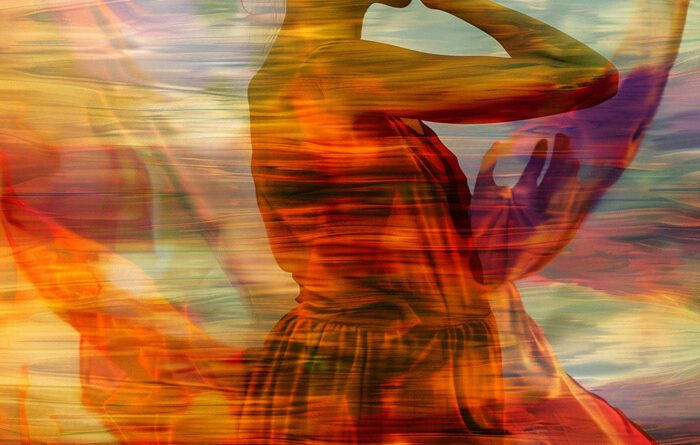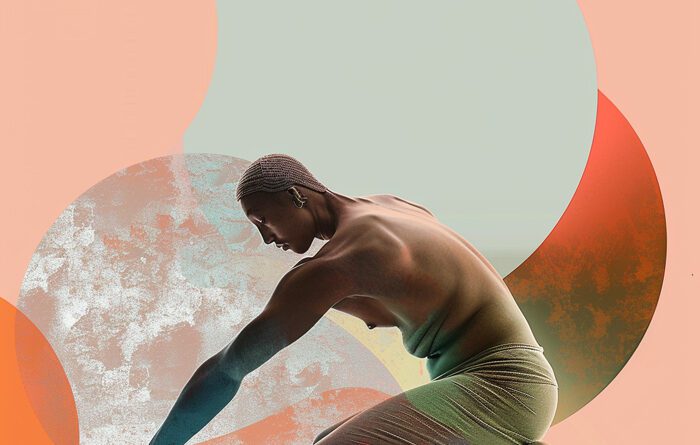If you’re a beginner looking to dive into the world of yoga, then Mountain Pose (Tadasana) is the perfect starting point for you. As a yoga instructor specializing in working with beginners, I understand the importance of simplicity and ease when introducing new poses. In this detailed guide to Mountain Pose, I’ll provide you with clear and concise instructions to help you navigate the complexities of this foundational pose. With tailored guidance and a friendly tone, I aim to ensure that you feel comfortable and confident as you step onto the mat and unlock the secrets of Tadasana. So let’s begin this journey together, as we delve into the beauty and benefits of Mountain Pose.
What is Mountain Pose?
Mountain Pose, also known as Tadasana, is a foundational yoga pose that serves as the starting point for many other poses. It is a standing posture that promotes balance, stability, and proper alignment. The name “Mountain Pose” reflects the strength, stillness, and groundedness of a mountain, as well as the connection between the earth and the sky.
Definition of Mountain Pose
Mountain Pose involves standing tall with your feet hip-distance apart, grounding your feet firmly into the earth, and aligning your body from head to toe. It is a posture that aims to create a strong and stable foundation, both physically and energetically.
Physical Alignment in Mountain Pose
In Mountain Pose, it is important to pay attention to your physical alignment to ensure you are practicing the pose correctly. Here’s a breakdown of the key elements of physical alignment in Mountain Pose:
- Stand with your feet hip-distance apart: Start by standing with your feet parallel to each other, about hip-width apart. Allow your toes to point forward or slightly inward, whichever feels more comfortable for you.
- Ground the feet and distribute weight evenly: Feel the connection between your feet and the earth beneath you. Distribute your weight evenly on both feet, with your weight centered and balanced.
- Engage the leg muscles: Activate your leg muscles by gently lifting your knee caps. This will help to create stability and support throughout the pose.
- Lengthen the spine: Imagine a string pulling the crown of your head towards the sky, lengthening your spine. Engage your core muscles to maintain a tall and upright posture.
- Relax the shoulders: Allow your shoulders to soften and release any tension. Draw your shoulder blades slightly together and down your back, promoting proper alignment of the upper body.
- Extend the arms alongside the body: Let your arms hang naturally by your sides, with your palms facing inwards. This creates a sense of openness and relaxation in the upper body.
- Gently tuck the chin: Keep your chin parallel to the ground and in a neutral position. Avoid jutting the chin forward or dropping it too low.
- Softly gaze forward: Direct your gaze straight ahead, focusing on a point in front of you. This helps to center your attention and maintain balance.
- Breathe deeply and evenly: In Mountain Pose, pay attention to your breath. Take slow, deep breaths, filling your lungs completely and exhaling fully. Allow your breath to flow naturally and create a sense of relaxation and presence.
Benefits of Practicing Mountain Pose
Practicing Mountain Pose regularly offers numerous benefits for both the body and the mind. Here are some key benefits of incorporating Mountain Pose into your yoga practice:
Improves posture
Mountain Pose helps to improve your overall posture by aligning your spine and encouraging proper alignment of the entire body. By standing tall and lengthening the spine, you can counteract the effects of slouching and hunching that may occur in daily life. This helps to alleviate tension and discomfort in the neck, shoulders, and back.
Increases body awareness
Mountain Pose promotes body awareness by encouraging you to become more mindful of your alignment and physical sensations. As you cultivate awareness of your body in this pose, you become more attuned to imbalances or areas of tension that may need attention. This increased body awareness can be carried into other aspects of your daily life, helping you to move with greater ease and efficiency.
Strengthens the legs and core
In Mountain Pose, you engage your leg muscles and activate your core to maintain stability and balance. This strengthens the muscles of the legs, including the quadriceps and hamstrings, as well as the deep abdominal muscles. Building strength in these areas not only enhances your physical stability but also supports proper posture and alignment throughout the body.
Relieves stress and anxiety
Mountain Pose is a grounding and calming posture that can help to reduce stress and anxiety. By focusing on the breath and finding stillness in the body, you can cultivate a sense of inner peace and tranquility. This pose also helps to center the mind and bring your attention to the present moment, allowing you to let go of worries and distractions.
Step-by-Step Instructions for Mountain Pose
To practice Mountain Pose, follow these step-by-step instructions:
- Stand with your feet hip-distance apart: Start by standing with your feet parallel to each other, about hip-width apart. Allow your toes to point forward or slightly inward, whichever feels more comfortable for you.
- Ground the feet and distribute weight evenly: Feel the connection between your feet and the earth beneath you. Distribute your weight evenly on both feet, with your weight centered and balanced.
- Engage the leg muscles: Gently lift your knee caps by engaging your leg muscles. This will create stability and support throughout the pose.
- Lengthen the spine: Imagine a string pulling the crown of your head towards the sky, lengthening your spine. Engage your core muscles to maintain a tall and upright posture.
- Relax the shoulders: Soften your shoulders and release any tension. Draw your shoulder blades slightly together and down your back, promoting proper alignment of the upper body.
- Extend the arms alongside the body: Let your arms hang naturally by your sides, with your palms facing inwards. This creates a sense of openness and relaxation in the upper body.
- Gently tuck the chin: Keep your chin parallel to the ground and in a neutral position. Avoid jutting the chin forward or dropping it too low.
- Softly gaze forward: Direct your gaze straight ahead, focusing on a point in front of you. This helps to center your attention and maintain balance.
- Breathe deeply and evenly: Inhale deeply, filling your lungs completely, and exhale fully. Continue to breathe deeply and evenly throughout the pose, allowing your breath to create a sense of relaxation and presence.

Common Mistakes in Mountain Pose
While Mountain Pose may seem simple, there are some common mistakes that people make when practicing this pose. By being aware of these mistakes, you can ensure that you are getting the most out of your practice and avoiding potential injuries. Here are some common mistakes to watch out for in Mountain Pose:
Slouching or hunching the shoulders
One common mistake is slouching or hunching the shoulders. This can lead to tension and discomfort in the neck and upper back. Remember to keep your shoulders relaxed and draw your shoulder blades slightly together and down your back to maintain proper alignment.
Leaning too far forward or backward
Another mistake is leaning too far forward or backward, which can throw off your balance and compromise the alignment of your spine. Aim to maintain a straight line from your head to your tailbone, with your weight evenly distributed on both feet.
Locking the knees
Locking the knees is a common mistake that can put unnecessary strain on the joints. Instead, keep a slight bend in the knees to provide stability and prevent hyperextension.
Dropping the chin too low
Dropping the chin too low can strain the neck and compress the cervical spine. Keep your chin parallel to the ground and in a neutral position, avoiding excessive upward or downward movement.
By being aware of these common mistakes and practicing with mindfulness, you can ensure that you are practicing Mountain Pose safely and effectively.
Modifications and Variations of Mountain Pose
Mountain Pose can be modified or varied to suit your individual needs and abilities. Here are some modifications and variations of Mountain Pose that you can explore:
Using a wall for support
If you have difficulty maintaining balance or would like some additional support, you can practice Mountain Pose with the support of a wall. Stand with your back against the wall, allowing your head, upper back, and hips to touch the wall. This can help you to align your spine and body correctly.
Keeping a slight bend in the knees
If you have tight hamstrings or knee issues, you can keep a slight bend in the knees instead of fully straightening them. This modification provides more stability and reduces strain on the knees.
Practicing with a block between the thighs
Placing a yoga block between your thighs can help to engage the inner thigh muscles and promote proper alignment in Mountain Pose. Squeeze the block gently with your thighs to activate the muscles and create stability.
Adding arm variations
While the traditional arm position in Mountain Pose is to extend the arms alongside the body, you can also explore different arm variations. For example, you can reach your arms overhead, interlace your fingers and stretch them upward, or place your hands on your hips. These variations add a new dimension to the pose and can help to deepen your practice.
Remember to listen to your body and choose the modifications or variations that feel comfortable and safe for you. Always work within your own limits and avoid any movements or adjustments that cause pain or discomfort.
Tips for Maintaining Mountain Pose
Maintaining Mountain Pose requires focus, mindfulness, and attention to detail. Here are some tips to help you maintain a strong and grounded Mountain Pose:
Focus on the breath
Throughout your practice of Mountain Pose, pay attention to your breath. Take slow, deep breaths, filling your lungs completely and exhaling fully. Allow your breath to guide your movements and create a sense of relaxation and presence.
Check your alignment regularly
Regularly check your alignment in Mountain Pose to ensure that you are practicing with proper form. Take a moment to scan your body from head to toe, making any necessary adjustments to maintain a tall and upright posture.
Engage the core muscles
Engaging your core muscles in Mountain Pose helps to stabilize your body and support proper alignment. Imagine drawing your navel towards your spine and gently activating your deep abdominal muscles.
Relax the facial muscles
Often, when holding a pose for a longer duration, tension can build up in the facial muscles. Consciously relax your facial muscles, including the jaw, forehead, and eyebrows. Soften your gaze and allow your face to reflect the calmness and stillness of the pose.
By incorporating these tips into your practice, you can enhance the benefits of Mountain Pose and deepen your connection with your body and breath.
Precautions and Contraindications
While Mountain Pose is generally safe for most people, there are some precautions and contraindications to be aware of. If you have any recent injuries or medical conditions, it is advisable to avoid practicing Mountain Pose or any other yoga pose without consulting a healthcare professional. They can provide personalized guidance and support based on your specific needs.
Additionally, if you have any concerns or questions about whether Mountain Pose is suitable for you, it is always a good idea to consult with a healthcare professional or a qualified yoga instructor. They can help assess your individual situation and provide guidance tailored towards your unique needs.
Incorporating Mountain Pose into Your Yoga Practice
Mountain Pose can be incorporated into your yoga practice in various ways. Here are a few suggestions for incorporating Mountain Pose:
Begin your yoga practice with Mountain Pose
Start your yoga practice with a few rounds of Mountain Pose to ground yourself and establish a sense of presence and focus. This can help you to transition from your daily life to your yoga practice and create a sacred space for your practice.
Use Mountain Pose as a transition between postures
Mountain Pose can serve as a transition between various yoga postures. For example, you can flow from Mountain Pose into a forward fold, a backbend, or a standing balance pose. By using Mountain Pose as a transition, you can cultivate mindfulness and maintain a sense of stability throughout your practice.
Combine Mountain Pose with balancing poses
Mountain Pose is an excellent posture to practice before or after balancing poses. It helps to build strength and stability in the legs and core, which are essential for balancing. Consider incorporating balancing poses like Tree Pose or Warrior III into your practice, alongside Mountain Pose, to enhance your balance and focus.
By incorporating Mountain Pose into your yoga practice, you can deepen your practice and experience the numerous benefits that it offers.
Frequently Asked Questions about Mountain Pose
Here are some frequently asked questions about Mountain Pose:
Is Mountain Pose suitable for beginners?
Yes, Mountain Pose is suitable for beginners. It is a foundational pose that provides a solid starting point for learning proper alignment and body awareness. It is a great pose to introduce beginners to the fundamentals of yoga practice.
Can Mountain Pose help with back pain?
Mountain Pose can help with back pain by promoting proper alignment and improving posture. By aligning the spine and strengthening the core muscles, Mountain Pose can help relieve tension and discomfort in the back. However, it is important to consult a healthcare professional if you have chronic or severe back pain.
How long should I hold Mountain Pose?
The duration of holding Mountain Pose can vary depending on your individual practice and intention. As a starting point, you can hold the pose for 30 seconds to 1 minute. Over time, you can gradually increase the duration as your strength and endurance improve.
Can I practice Mountain Pose during pregnancy?
Mountain Pose can be practiced during pregnancy, but it is important to make modifications to accommodate the changes in your body. You may need to widen your stance to support your growing belly and avoid deep backbends or twists. It is advisable to consult with a healthcare professional or a qualified prenatal yoga instructor for guidance and support.
Conclusion
Mountain Pose, or Tadasana, is a foundational yoga pose that offers numerous benefits for the body and mind. Its emphasis on alignment, stability, and grounding makes it an essential pose in any yoga practice, especially for beginners.
Regular practice of Mountain Pose can enhance posture, increase body awareness, strengthen the legs and core, and promote relaxation. It serves as a starting point for many other yoga poses and can be incorporated into various sequences and transitions.
Start incorporating Mountain Pose into your yoga routine today to experience the transformative effects of this powerful pose. Whether you are a beginner or an experienced yogi, Mountain Pose offers something for everyone on their unique yoga journey. Embrace the strength, stillness, and groundedness of a mountain as you deepen your practice and explore the limitless possibilities within.







